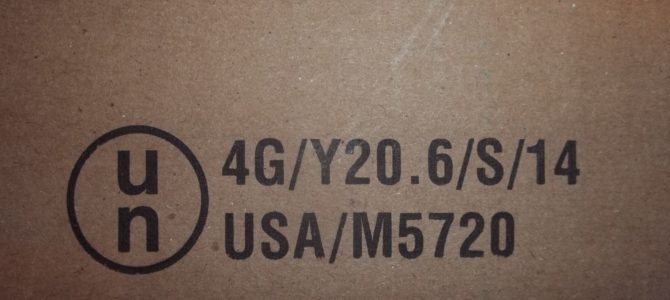A person who offers a hazardous material (HazMat) for transportation (aka: the shipper) is required to select the authorized packaging for the HazMat and follow any relevant packing instructions in the Hazardous Materials Regulations (HMR). The authorized packaging and packing instructions are found in Part 173 of Title 49 of the Code of Federal Regulations (CFR). The section of part 173 that contains the packing instructions and identifies the HazMat’s authorized packaging is referenced in column 8 of the hazardous materials table.
- Column 8A for packaging exceptions, if any.
- Column 8B for non-bulk packaging, if such packaging is allowed for the HazMat by the HMR.
- Column 8C for bulk packaging, if such packaging is allowed for the HazMat by the HMR.
Read: Bulk Packaging for Hazardous Materials Explained!
|
Contact me with any questions you may have about the transportation of hazardous materials by air, highway, vessel, or rail International and Domestic Daniels Training Services, Inc. 815.821.1550 |
But that’s not all! In addition to column 8, the shipper must also refer to the special provision codes of column 7. What are the special provision codes of column 7 in the hazardous materials table?
49 CFR 172.101(h):
Column 7: Special provisions. Column 7 specifies codes for special provisions applicable to hazardous materials. When Column 7 refers to a special provision for a hazardous material, the meaning and requirements of that special provision are as set forth in §172.102 of this subpart.
The codes in column 7 refer to special provisions, the meaning and requirements of which are found in §172.102. Not all special provision codes are applicable to all shipments of HazMat; it is possible that most (all?) of them won’t apply to a consignment of HazMat. For example, special provision codes that begin with “A” are applicable only to transportation by air. If a HazMat is to be transported by highway, rail, or vessel, then any special provision codes beginning with “A” are not applicable to that consignment.
Read: The Meaning of Special Provision Codes
The special provision codes of column 7 are identified and explained at §172.102. There we find a further explanation of special provision codes and what they mean to the shipper of a HazMat. When a special provision specifies packaging or packaging requirements, it is in addition to:
- The standard requirements of all packagings prescribed in §173.24.
- Any other applicable packaging requirements in 173, subparts A and B.
What that means is that the special provision codes, if applicable, will be in addition to any other packaging requirements of the HMR. But we’re not done…When a special provision specifies packaging or packaging requirements:
- If the special provision imposes limitations or requirements in addition to those prescribed in the packing instructions referenced by column 8 of the hazardous materials table, the shipper must comply with the requirements of the special provision.
So, no matter the requirements of the packing instructions of part 173 referenced by column 8 of the hazardous materials table, the special provisions codes will, if applicable, supersede and replace them for determining compliance.
For more information on both columns 7 and 8, read: Determining Authorized Packaging for the Transportation of a Hazardous Material
The special provision codes of column 7 are just one step in the process of offering a hazardous material for transportation in commerce. There are many more and most of them are the responsibility of the shipper of the HazMat. Make certain you are in compliance with the HMR by getting the required USDOT HazMat Employee training for you and your HazMat Employees.

